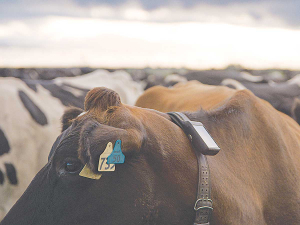If it’s on paddocks already grazed by ewes and lambs, then plan a regular, relatively short interval drench programme. However, if it’s on cleaner ground, for example after cattle, then you can plan to stretch intervals, says WormWise spokesman Trevor Cook.
“Use faecal egg counting as a safety net if; you are stretching intervals,” he recommends.
“Going onto contaminated areas the expectation must be that you’re going to be frequently drenching. The variation to that would be if it got very dry.”
With lambs going onto contaminated areas waiting for faecal egg counts to rise as a signal to start drenching is a risky strategy as eggs are only shed several weeks after worms are ingested, by which time considerable damage may have been done, he warns.
Whatever the plan, there needs to a readiness to be flexible, as the best laid plans can go awry, he adds.
The same applies with the more immediate issue of lambs on their mothers. With ewes in good condition and milking well there is a strong protective effect so no treatment should be needed. However, as milk intake declines, or if there was never much milk in the first place, keep a close watch and if a worm burden is suspected test and be prepared to drench.
“Some trials show there is a response, but it tends to be in situations where the ewes are not fed very well.”
As for what to drench lambs with, Cook says: “An effective combination, which begs the question ‘what’s an effective combination’ and only about 10% of farmers know what’s effective on their property.”
After years of urging farmers to find out the resistance status of their property, his frustration with that low percentage is clear.
“It’s as important as a soil test but why won’t they do it?”
The cost of maybe $1200 to $2000 for a Faecal Egg Count Reduction Test (FECRT) can quickly be recouped in improved performance by using effective products. In some cases, cost savings by not using more expensive mixes unnecessarily. The knowledge will also help build a resistance management strategy which will postpone, possibly indefinitely, a major resistance problem developing.
“You could be using a combination which is 100% effective, but the components could be failing quite significantly so your combination could fall over at any time.”
For example, the common combination of albendazole plus levamisole may be 100% effective, but test the constituents separately and they may only be 60-70% effective. To carry on using such a product routinely in such a situation would be asking for trouble.
Resistance status knowledge also feeds into other management strategies, such as refugia, the practice of leaving some animals from a mob untreated.
“If you’re using a combination in which the active ingredients are still very effective individually then the modelling shows you only need to leave a very small number of animals untreated for your regime to be sustainable but where the combination constituents are not as effective, then you need to leave quite a lot more untreated, maybe 10%.”
Cook admits the modelling hasn’t been done for the scenario where the combination is 100% effective, but the individual components are failing, so 10% is a best guess. What is known is that once the efficacy of a combination starts to wane, even if only a little, the level of refugia required soars.
“With a combination that’s only 95% effective the level of refugia to maintain efficacy at that level is 20 or 30 times more.”
As a principle, refugia has been “taken on board” by most farmers, he says. It’s just the detail now that needs to be worked on, and knowing resistance status is essential for that.



















